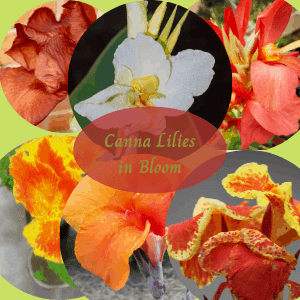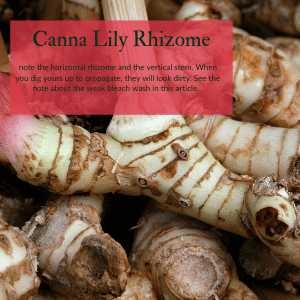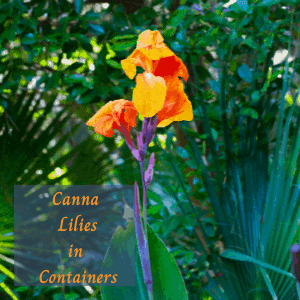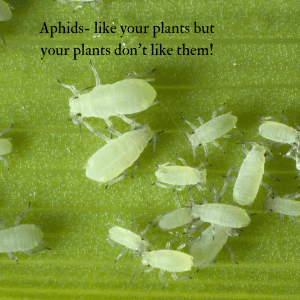Canna lilies are tall, vibrant, and striking tropical plants that you can grow in any climate. They will add a lush and dramatic focal point to any sunny spot. You can select from an apparently infinite variety of colors and patterns for both flowers and foliage. We grow many of them and find them greatly rewarding in the garden if you accommodate their few essential needs. Here is how to choose and grow the best canna lilies.
“Canna Lily, An Exotic Accent For Any Garden“

The large blooms of the canna lily resemble those of iris or perhaps gladiolus. Canna flowers stand on spikes and are repeat bloomers and, with modest attention, will provide beauty throughout your season.
For other “Summer Blooming Bulb” Ideas, try this.

Canna lily leaves are large, banana-like, and the leaf blade tapers into a sheath that merges with the stem. Thus, no petiole, or stalk, joins the leaf to the stem.
The leaves of different varieties of canna lily appear in a wide variety of colors and patterns, including vivid emerald green, purple and black shades, and circus-like stripes.
The accompanying illustration will show you some ideas.
Allow the sun to light the leaves from behind and they will glow like stained glass!
If your garden is in a temperate climate, canna lilies will give you summer color from both flowers and foliage. You can easily store the rhizomes for the winter and replant them next spring. In our hot climate canna lilies are perennial sources of color and form. Plant them directly in the soil or in containers.
Gardeners who dig in remarkably cold climates have planted and stored canna lilies for the past few centuries that we know of. In climates where they are perennial, we split the rhizomes and make new plants every few years.
There are a few things to know about choosing and caring for the rhizomes or new plants. Understanding how canna lilies grow will help you get the most from your plants.
With many colors and patterns of both foliage and flowers and a wide range of sizes, canna lilies are versatile. They can fill diverse roles in your garden. Position your cannas to enjoy their prominence in your garden at the height of summer.
There may be no more famous example of a perfect garden border than the Long Border at Great Dixter in the UK. An English manor house, first recorded in 1220 was the home of the great gardener Christopher Lloyd (1921-2006). He developed it as a hub of global ideas about the environment that today connects gardeners around the world.
We all know this situation, it is well into summer, and our beautiful garden has bare spots. Something we worked to produce paid us off and bloomed brilliantly, but now it is gone. Lloyd, knowing this would happen, planted tall cannas in polystyrene containers. They were easy to move, and he would put the plants into the border and fill the place with color.
I read this story a long time ago, and I never forgot it. I think about it whenever something starts to fade from view and needs to be moved or cut back. Canna lilies in pots will do the trick when you need them!
Consider using your canna lilies to fill these needs:
Canna lilies-Canna is the only genus in the family, Cannaceae. Canna is the genus name in Botanical Latin and is the common name too! They are related to the banana plant and the ginger. The botanical name Canna indica indicates some of the confusion about this family of plants. Although a native of the warm Americas, it is named as if it came from India. We think the plant traveled from South and Central America, first east and then west.
Canna lilies have been over the years, a little like “skinny jeans,” and you need to be observant to know if they are in or out of fashion at any point in time! Because they have great popularity, there are 19 varieties but far more cultivars. Cultivars are varieties of a plant that are manufactured.
Here is how to identify a cultivar. The plant name is a genus, then species in Botanical Latin, and then if the plant has a cultivar, the cultivar’s name is written in English with single quotation marks around it like a book title.
So, Canna flaccida is a natural species; it exists in nature. Canna Indica ‘Angel Pink” is a cultivar grown in a greenhouse because somebody thought you would love its specific pink color.
If you appreciate the glamorous canna, you will have plenty of choices. Size, shape, color, pattern, and shape of blooms, color, pattern, and shape of foliage. There are many choices. In the end, I have added resources showing images and descriptions and resources showing plant dealers. The dealers’ websites will usually show you ways to sort online and feature the attributes you are interested in.
If I want salmon-colored flowers with green leaves on a plant that is 4′ high, I can search for that!
Because canna lilies come in significantly different sizes, there are some rankings you can use when shopping. These names come from the plant breeders, making it easier for you to start your search in such a large population of plants.
Please note that there is considerable overlap in canna foliage. Some colors have patterns or other colors and even picotee edges. Choices are many. For example, you can choose gray/green or emerald or yellow/green.
Green- see ‘Ambassador’ with white blossoms and ‘Apricot’ pale apricot flowers with gray/green foliage. Also, ‘City of Portland’ with salmon flowers and soft green leaves.
Green and Yellow-‘Bangkok’, an ancient variety, has yellow flowers and green leaves with thin white stripes.
Red- see Canna ‘Australia’, can look red, bronze or black.
Bronze- see Canna x generalis ‘Bronze Scarlet.’
Purple-see Tropicana ‘Black Canna’ foliage is black/purple
Black- see above and ‘Zulu Pink, and ‘King Humbert’
Stripes and Patterns-see Canna tropicana, with burgundy, gold, yellow, pink, and green stripes.Bengal Tiger, ‘Pink Sunburst.’
The bulbs from which you plant large canna lilies (some are 6-10′ tall!) are rhizomes. Rhizomes are continuously growing underground stems. They put out shoots and roots at intervals.

Canna lily rhizomes are modified, horizontal, underground stems designed to store food for the stem.
A healthy rhizome is firm, plump, and has several eyes. Multiple eyes (3-5) will produce the bigger plants with the most flowers. Buy only from reputable dealers. A few decades ago, most canna rhizomes were damaged by fungus. The best new varieties are fungus resistant.
Canna’s eyes are prominent red buds on the rhizome. A rhizome piece containing three or more eyes is considered successful for growth. At least one eye is needed for the piece to grow, but it may be less successful.
Plant outdoors only after all threat of frost has passed. You can start them in pots indoors several weeks before you plan to move them outdoors. Plant the rhizomes about 4″ deep horizontally and space them about 1-2′ apart. Plant the rhizomes with the pointy tip facing up or to the side.
Some gardeners prefer about 2-4″ deep, arguing that planting deeper is negative for flowering. I have not planted cannas at this shallow level. I’d love to hear opinions on the subject. I do plant caladiums on the shallow side and have done so for several years. I do not have a rodent problem in this garden.
Sufficient distance is most important in zones 9-10, where Cannas are hardy as they will be permanent and they do spread. Plant in moist but well-drained soil. They will be most vigorous in rich soil, amended with compost. Most varieties prefer full sun and regular water.
The Canna rhizomes will take about 4-6 weeks to begin to sprout. As tropical plants, they will perform more quickly in warm environments.
Use the same planting methods and utilize high-quality potting soil. Here is more information on how to select potting soil. Cannas come in sizes ranging from dwarf varieties beginning at 1-3′ tall to giants of 6-10′ high. Ensure your pot is large enough and provide more water and fertilizer for cannas in containers. Fertilize every one to two weeks. Cannas will continue to create new rhizomes, and the plants will be required for periodic division.

Use large pots for canna lilies; some varieties can reach 5′ in containers. Allow a minimum of 24″ in depth for the container.
Choose companion plants that bloom earlier along with the canna’s and grow in the same rich and damp soil. Consider various annuals—plants with fine leaf texture- to trail from the container. Hibiscus, dahlias, ornamental grasses, and ferns may suit your needs.
Maintain consistently moist soil. Some canna’s, such as the Florida native Canna flaccida is happy in standing water. Choose a slow-release, organic fertilizer that is high in phosphorus. Mix fertilizer in the planting hole and continue to fertilize 2-3 times during the growing season.
When the plant is growing and blooming, maintain moist soil; keep it dry when it is dormant or stored as rhizomes.
Deadhead cannas regularly to encourage the plant to rebloom. Pruning and deadheading spent blooms will increase the blooming season and improve the plant’s appearance. Trim blossoms when spent. If there is a second bloom available, just remove the spent flower. Otherwise, you can cut the stem to the next leaf. If the stem of the plant is damaged you can cut it near the ground and it will regrow.
At the end of the season cut the stems to 4″ above the ground. The plant will continue to bloom if you live in a frost-free area. In zone 8, cut the plant stem and mulch the rhizome. In colder climates, lift the bulb, allow it to dry, and store for the winter.
Viruses are fatal to canna lilies. Do not allow your pruning tools to spread disease among your plants. A simple procedure is to dip the blades in isopropyl alcohol.

These are aphids; learn to identify them and other pests on the bottoms of your plant leaves.
Learn Integrated Pest Management, the effective and environmentally sensitive approach to pest management that relies on a series of progressive practices to control damage to plants, both ornamental and agricultural.
Pests Found On Canna Lilies
Aphids-soft bodied pear-shaped insects, less than 1/8″ in length and usually pale greenish.
Thrips-tiny slender sucking insects. If you suspect a problem, shake the branch over a piece of white paper. Thrips will drop onto the paper as tiny black dots.
Spider mites-you will see silk-like webbing on the leaves and remove affected leaves.
Scale-they varies in appearance, and all emit a waxy substance with the arrival of fish scale.
Canna Viruses-look for yellow spots, streaks on the leaves, mottled foliage, and stunted flowers. This is a fatal disease.
Canna Fungal Diseases are rarer but c, anna can have Botrytis Blight and Botrytis Blight and canna rust.
Aster Yellows are identified by dull yellow leaf color, stunted foliage, and curled leaves.
Note the information above on developing blooms. Follow those instructions and ensure that the plants are wide enough to have sufficient airflow. Be observant and notice early signs of pests and diseases.
Canna Lilies were once known only for brilliant and interesting foliage and had only insignificant flowers. Canna Lilies originate in the tropical Americas and appeared in Europe in the 16th century via the Dutch East Indies Company. They became popular with gardeners in the 19th century, and the development of the many and varied colors and forms of both blooms and foliage began.
To maintain beautiful blooms, ensure the following conditions:
Cannas are uniquely accepting of water; some varieties will be most successful in shallow water. These include:
Canna Lilies growing in ponds and water features add an exotic touch, and these few steps will help you succeed.
Separate the plants every 3-5 years. If left undivided, the plants will spread at the edge and die off in the middle. In colder climates, separate the plants in spring while they are still dormant. In zones 8/9-11, divide them in fall. Separate the plants like this”
If you have concerns about pests or diseases, you can wash the sections with a solution of 1 part bleach to 10 parts water. Depending on your climate and time of year, you can plant it immediately or store it for the winter.
Store your rhizomes in a dry space with a temperature above 45 degrees. You can contain them in paper bags, newspaper, vermiculite, or peat moss. Check the plant material monthly, and if any begin to rot, throw them away.
Here are articles listing varieties of canna lilies.
A long list of varieties followed by cultivars. There are useful photos and some basic features also.
Bulb Dealers and Breeders

Sign up for my newsletter and download my complete guide to a year-round hurricane-ready garden. It’s the plan designed by two Master Gardeners in the Hurricane-prone tropics!